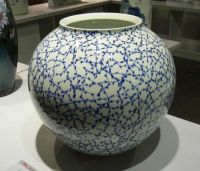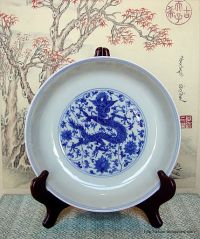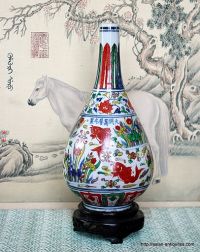Jingdezhen
Jingdezhen (Chinese: 景德镇), China's "Porcelain Capital", is a city of 1.58 million in Jiangxi Province in eastern China.
Contents
Geography
The city lies midway between Yellow Mountain and Lake Boyang. The Yangtze River runs through the city, and the city's subtropical climate brings plentiful rain and sunshine.
History
Porcelain production in Jingdezhen dates back to the Han Dynasty (202 BC-220 AD). The city, then a town, was originally known as Xinping, but its name was changed to Changnan in the Tang Dynasty (618-907). In 1004, Emperor Zhenzong of the Northern Song Dynasty (960-1279) ordered the town to produce ceramic goods exclusively for the royal family. The town's name was changed once more – this time to Jingde – the name of the Emperor's reign period. The name "Jingdezhen" or Jingde Town has remained in use ever since. From the Yuan Dynasty (1271-1368) to the Qing Dynasty (1636-1911), central governments appointed officials to Jingdezhen to supervise the production of imperial porcelain.
Economy
Jingdezhen remains one of China's most important ceramics production centers. The annual Jingdezhen International Ceramics Expo is one of the most important ceramics trade shows in the world. The city has diversified its industry into other fields including hi-tech industries, home appliances, chemicals, medicine, and information technology.
Tourism
Most of Jingdezhen's tourist attractions are linked to its ancient ceramics industry. It was chosen in 1997 as one of top 35 tourist destinations for promotion by the National Tourism Administration. It has six AAAA level tourist attractions: Ceramic History and Culture Zone, Gaoling-Yaoli Scenic Area, Fuliang Ancient Government Office, Hongyan Scenic Area, Deyu Ecological Garden and China Porcelain Garden.


